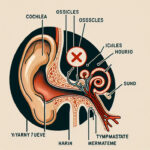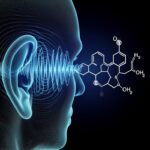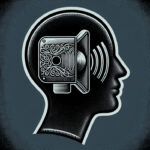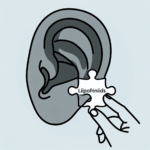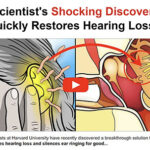This 30 Second Technique is Shockingly Effective
The Science Behind Deaf Disease: A Comprehensive Overview
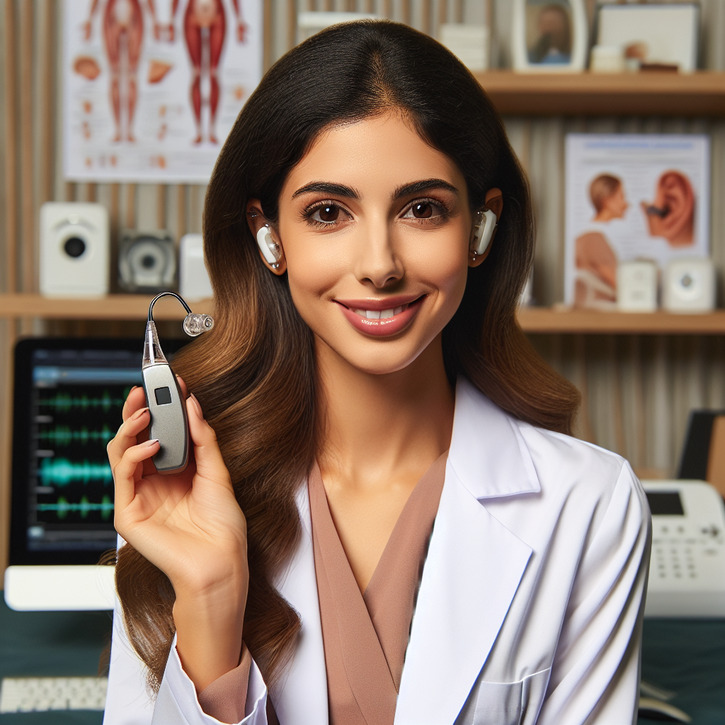
Understanding Deaf Disease: An Introduction
Defining Deaf Disease: The Basics
When we refer to "deaf disease," we are broadly encompassing the various conditions that result in hearing loss, which can range from mild to profound deafness. It's important to note that deafness is a symptom rather than a disease itself. However, for the sake of clarity, we will use the term "deaf disease" throughout this article to denote the myriad of disorders that lead to hearing impairment. Hearing loss can affect individuals of any age and can significantly impact communication, social interaction, education, and employment.
Prevalence and Significance of Deafness
Deafness is a global issue, with millions of people affected to varying degrees. According to the World Health Organization, over 5% of the world's population has disabling hearing loss. This condition not only affects the individual's quality of life but also poses challenges for healthcare systems and societies at large. The significance of deafness is not solely in its prevalence but also in the individual stories, the personal hurdles overcome, and the societal adjustments made to accommodate those living with hearing loss.
The Biological Mechanisms of Hearing
How We Hear: The Auditory System Explained
Hearing is a complex process involving both mechanical and neural components. Sound waves enter through the outer ear, travel through the ear canal, and vibrate the tympanic membrane, or eardrum. These vibrations are then transmitted by the ossicles, three tiny bones in the middle ear, to the cochlea in the inner ear. The cochlea, filled with fluid and lined with hair cells, converts these vibrations into electrical signals that the auditory nerve carries to the brain, where they are interpreted as sound.
Where Things Go Wrong: Pathophysiology of Deaf Disease
Deaf disease can arise from issues at any point in the auditory system. Conductive hearing loss occurs when sound waves cannot efficiently reach the inner ear, often due to blockage or damage to the ear canal or ossicles. Sensorineural hearing loss, on the other hand, is attributed to damage to the hair cells in the cochlea or the auditory nerve itself. Additionally, mixed hearing loss involves both conductive and sensorineural elements. Each type of hearing loss has unique causes, and thus, specific diagnostic and treatment approaches.
Genetic and Environmental Causes of Deaf Disease
The Role of Genetics in Hearing Loss
Genetics play a crucial role in many cases of hearing loss. Some individuals are born with hearing impairment due to genetic mutations that affect the structure and function of the auditory system. These genetic factors can be inherited from one or both parents, or they can result from new mutations. There are numerous genetic syndromes where deafness is a key feature, and genetic counseling can be an essential part of managing these conditions.
Environmental Factors Contributing to Deaf Disease
Environmental factors are also significant contributors to deaf disease. Exposure to loud noises, whether sudden or over time, can cause noise-induced hearing loss. Ototoxic medications and chemicals can damage the inner ear. Infections like meningitis, measles, or mumps can lead to hearing impairment, and even the aging process itself can precipitate presbycusis, or age-related hearing loss. Understanding these factors is vital for prevention and public health strategies.
Preventable vs. Non-Preventable Causes
While some causes of deaf disease are non-preventable, such as genetic conditions, others can be mitigated through proactive measures. Protecting ears from excessive noise, managing health conditions that can affect hearing, and avoiding ototoxic substances when possible are ways to prevent or slow the progression of hearing loss. Public awareness campaigns and education can play a significant role in preventing the preventable causes of deaf disease.
Diagnosing Deaf Disease
Early Signs and Symptoms
Recognizing the early signs of hearing loss is essential for timely intervention. These signs might include difficulty understanding speech, particularly in noisy environments, frequently asking others to repeat themselves, turning up the volume on electronic devices, and a ringing or buzzing sound in the ears known as tinnitus. Children may show delayed speech development or seem inattentive. Identifying these symptoms early can lead to earlier diagnosis and treatment, potentially mitigating the impact of hearing loss.
Tests and Procedures for Diagnosis
Diagnosing deaf disease involves a series of tests and procedures. Audiometry tests measure an individual's ability to hear varying intensities and pitches of sounds. Tympanometry assesses the middle ear's function, while otoacoustic emissions (OAE) and auditory brainstem response (ABR) tests evaluate the inner ear and auditory nerve pathways. These tests can help identify the type and degree of hearing loss, guiding appropriate treatment plans.
The Importance of Early Detection
Early detection of hearing loss is crucial for effective treatment and can significantly influence the outcome for the individual. For children, it's particularly important as hearing is vital for speech and language development. The sooner interventions can begin, the better the chances of minimizing the social and educational impacts of hearing loss. Screening programs for newborns and regular hearing tests for at-risk populations are key strategies in early detection efforts.
Treatment Options for Deaf Disease
Medical Interventions and Hearing Aids
Medical interventions for deaf disease can include medications or surgeries, depending on the cause. For many, hearing aids are the primary treatment modality, amplifying sounds to a level that the individual's ear can process. Today's hearing aids are highly sophisticated devices that can be customized to the user's specific hearing loss profile. They can significantly improve communication and quality of life for those with hearing impairment.
Cochlear Implants and Bone-Anchored Hearing Systems
Cochlear implants are an option for those with severe to profound sensorineural hearing loss who do not benefit from traditional hearing aids. These devices bypass damaged parts of the ear and directly stimulate the auditory nerve. Bone-anchored hearing systems are another surgical option, suitable for people with conductive hearing loss, mixed hearing loss, or single-sided deafness. These devices transmit sound through the bone of the skull to the inner ear.
Rehabilitation and Communication Strategies
Apart from medical and technological interventions, rehabilitation and communication strategies are integral to treating deaf disease. Speech therapy, auditory training, and learning sign language or lip-reading can enhance communication for those with hearing loss. Family involvement and support groups are also beneficial, providing emotional support and practical advice for managing daily challenges associated with deaf disease.
Living with Deaf Disease
Coping Mechanisms for Individuals and Families
Living with deaf disease demands adaptability and resilience. Individuals with hearing loss develop coping mechanisms, such as positioning themselves to see speakers' faces clearly or using text and email for communication. Families often learn sign language and other communication methods to support their loved ones. Psychological support is sometimes necessary to help individuals and families navigate the emotional aspects of living with hearing loss.
Education and Employment Considerations
Education and employment are two areas where deaf disease can pose significant challenges. Educational institutions may need to provide accommodations such as sign language interpreters, captioning services, or specialized teaching methods. In the workplace, adaptations might include visual alert systems, hearing assistive technology, and a culture of inclusion that supports those with hearing impairment.
Accessibility and Advocacy
Accessibility and advocacy are at the heart of improving life for those with deaf disease. Legislation like the Americans with Disabilities Act (ADA) mandates reasonable accommodations to ensure equal opportunities. Advocacy groups work tirelessly to raise awareness, drive legislative change, and improve the availability of resources and support for the deaf and hard of hearing community.
Advances in Deaf Disease Research
Current Research Trends in Hearing Disorders
The landscape of deaf disease research is ever-evolving, with current trends focusing on gene therapy, stem cell research, and advanced auditory prosthetics. Researchers are exploring ways to protect, repair, or replace damaged hair cells in the inner ear. Understanding the genetic basis of hearing loss has opened doors to potential gene editing therapies that could one day prevent or cure certain types of deaf disease.
Potential Future Therapies and Technological Innovations
The future holds promise for individuals with deaf disease, with potential therapies and technological innovations on the horizon. Advances in hearing aid technology, such as fully implantable devices or those that integrate with smartphones, continue to improve the user experience. Research into regenerating hair cells in the cochlea and developing novel drug therapies to prevent or reverse hearing loss offers hope for what may come.
The Role of Genetic Engineering in Treating Deaf Disease
Genetic engineering is a particularly exciting frontier in deaf disease treatment. With the advent of CRISPR and other gene-editing tools, researchers are investigating ways to correct mutations that cause hearing loss. While still in the experimental stages, these approaches could revolutionize treatment and potentially restore hearing in individuals with genetic forms of deaf disease.
Conclusion: The Ongoing Journey Toward Understanding Deaf Disease
Summarizing the Challenges and Progress
In conclusion, the journey toward understanding and managing deaf disease is filled with both challenges and progress. While hearing loss remains a significant global health issue, advancements in research, technology, and public policy are continually improving the lives of those affected. The dedication of healthcare professionals, researchers, and advocates is instrumental in driving these changes.
The Importance of Continued Research and Support
The importance of continued research cannot be overstated, as it paves the way for innovative treatments and a deeper understanding of deaf disease. Support from governments, organizations, and communities is essential to ensure that resources are available for this research and for the people living with hearing loss. With ongoing support, the future can be brighter for individuals with deaf disease.
Final Thoughts on Navigating Deaf Disease
Navigating deaf disease is a multifaceted endeavor that requires a combination of medical, technological, and social strategies. By staying informed about the latest developments, seeking timely medical advice, and advocating for accessibility, individuals with hearing loss can lead full and enriching lives. As a society, our collective efforts to support research and inclusivity will make a profound difference in the lives of those with deaf disease.

Laura Henderson is a health enthusiast and has been interested in healthy and natural methods of eliminating tinnitus and restoring natural hearing for many years.


